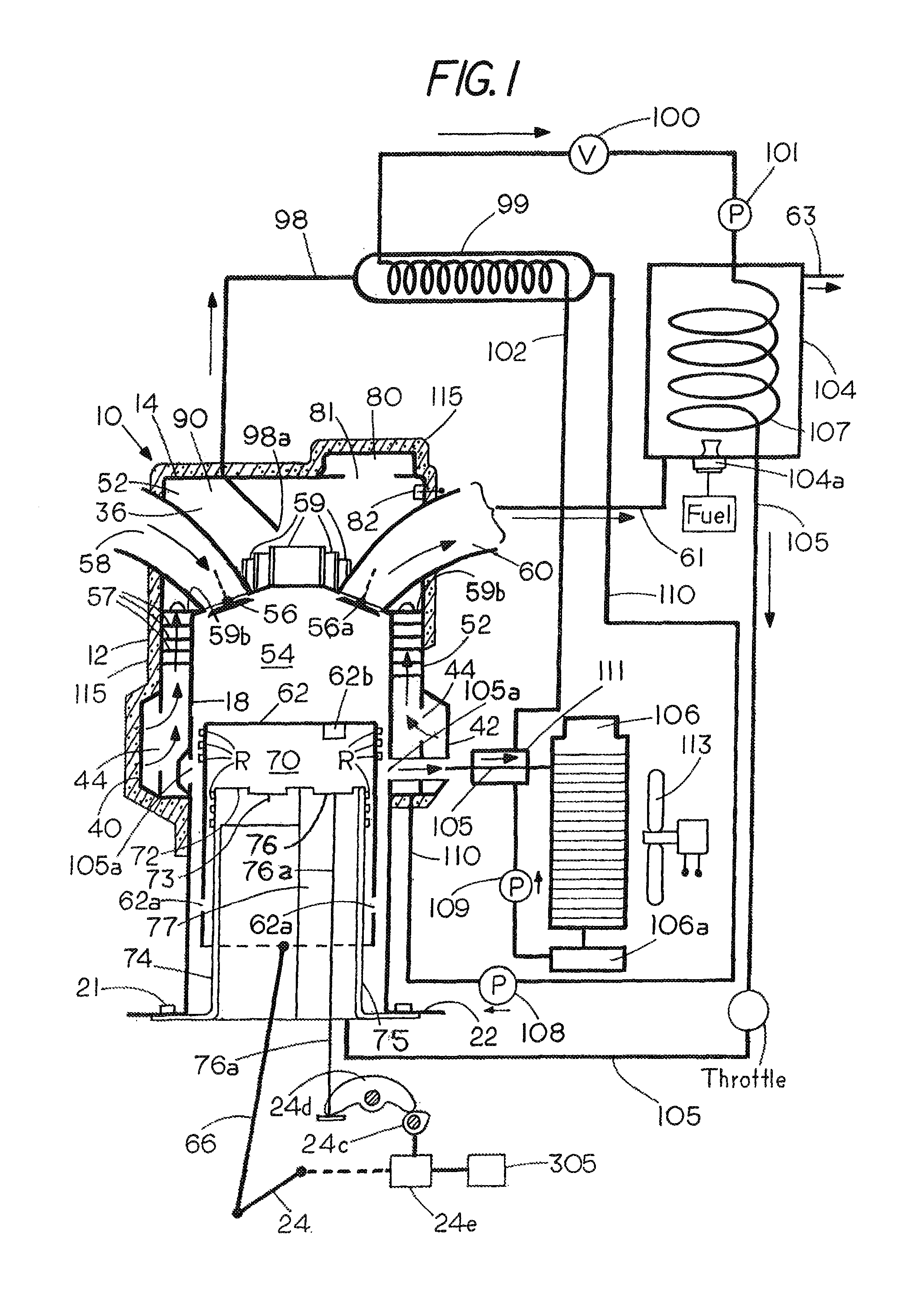High efficiency dual cycle internal combustion steam engine and method
a dual-cycle, internal combustion technology, applied in the direction of machines/engines, combination engines, combination engines, etc., can solve the problems of increasing fuel prices and shortages, increasing greenhouse gas emissions, and inefficient power recovery, so as to achieve efficient and improve heat transfer
- Summary
- Abstract
- Description
- Claims
- Application Information
AI Technical Summary
Benefits of technology
Problems solved by technology
Method used
Image
Examples
example 1
[0032]A one cylinder I.C. engine having a bore of 96 mm and a stroke of 78 mm was tested and found at 5994 rpm to produce a coolant flow of 4330 lb / hr which translated into an energy transfer rate of 27022 Btu / hr (ΔT of 6.24° F.). With an eight percent steam cutoff as a fraction of the steam power stroke, the combustion exhaust gases in generator 104 were sufficient to sustain a water evaporation rate of 313 lb / hr for steam at 800° F. and 800 psia, The pumps 28 and 108 and / or a coolant thermostat (not shown) are intentionally regulated by the central engine management computer 305 (FIG. 1) to raise the coolant temperature to 250° F. The feed water in tank 109 is at 200° F. Using a heat exchanger 99 that is able to provide an efficiency of 80% so as to heat the feed water to 240° F. (200° F.+80% of 50° F.), the heat absorbed from coolant equals 40° F.×313 lb / hr or 12520 Btu / fir which amounts to about 46% (12520÷27022) of the coolant heat having been transferred to feed water. The rem...
example 2
[0033]In a second run otherwise similar to Example 1 at 2996 rpm, coolant flow was 2646 lb / hr that translated to an energy transfer rate of 34148 Btu / hr (ΔT of 12.9° F.). Exhaust gas provided sufficient heat for the superheater 104 to sustain an indicated water evaporation rate of 156 lb / hr. Heated by coolant at 300° F. in a heat exchanger 99 of 80% efficiency to 280° F. (200+80% of 100° F.), the 200° F. feed water absorbs 80° F.×156 lb / hr or 12480 Btu / hr which is about 36% (12480÷34148) of the coolant heat. The exhaust gases in this run provided another 28000-33000 Btu / hr to the steam generator 104.
PUM
 Login to View More
Login to View More Abstract
Description
Claims
Application Information
 Login to View More
Login to View More - R&D
- Intellectual Property
- Life Sciences
- Materials
- Tech Scout
- Unparalleled Data Quality
- Higher Quality Content
- 60% Fewer Hallucinations
Browse by: Latest US Patents, China's latest patents, Technical Efficacy Thesaurus, Application Domain, Technology Topic, Popular Technical Reports.
© 2025 PatSnap. All rights reserved.Legal|Privacy policy|Modern Slavery Act Transparency Statement|Sitemap|About US| Contact US: help@patsnap.com



